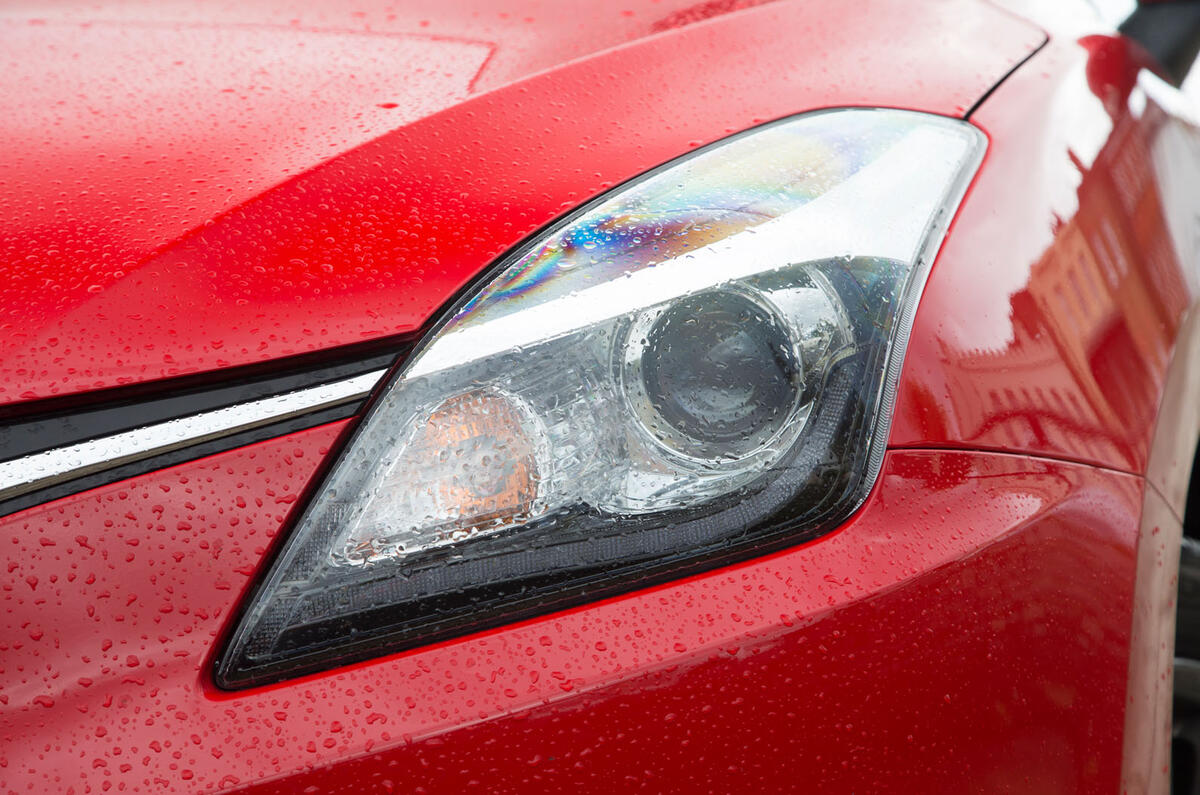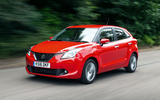Surprise and contradiction continue to dominate your impressions of the Baleno as you swing the lightweight, hollow-sounding driver’s door shut, settle into the cloth seat and take in the strange mix of materials.
In bargain shopping car territory, you don’t expect the soft-touch mouldings and solid, expensive-feeling switchgear that you find in an Audi or Mini costing 50% more. With a few notable exceptions, most of the Baleno’s fixtures and fittings look and feel just about pleasant and robust enough, given its pricing.
Striking a contrived and jarring note are the silvery trims around each air vent, along each interior doorcard and surrounding the air-con controls; they’re as out of place as a micro-salad garnish and a smudge of pomegranate jus on a plate of beans on toast.
There’s more chrome accenting along the length of the centre console: a piece of trim with exposed screw heads that flexes like a toddler’s plaything when subjected to a bit of tactile scrutiny.
Less superfluous is the car’s 7.0in colour touchscreen infotainment system, whose presence as standard on any £13,000 car is quite a coup. Its screen has a slightly low-rent, orange peel look to it and its menus aren’t the last word in easy navigability, but it’s a system of many functions and it’ll exceed the expectations of a great many owners.
It includes sat-nav, CarPlay and MirrorLink smartphone connectivity and DAB radio all as standard. If it isn’t the most usable, responsive or sharpest-looking system you’ve ever used, you might remember that this is all on a sub-£13k car, because it’s certainly offering a lot for the money.
The system shuns buttons and knobs, using instead touch-sensitive pads for volume control and for ‘home’, ‘voice control’ and ‘settings’ functions.
We prefer buttons for oft-pressed primary menus like these, because capacitive substitutes don’t have haptic feel and can be flaky.
But the touchscreen interface works well enough. There are four major control zones (nav, phone, MirrorLink, radio), while pressing the star in the centre of the screen brings up extra shortcuts pertinent to each zone (track skip, ‘take me home’ destination for navigation and so on).
The system’s rendering of graphics is fairly basic, but its mapping is detailed and easy to follow and the voice control seems to work well.
Ahead of the driver is another gadget sideshow: a trip computer with a number of wholly unnecessary modes for a budget supermini (a lateral g-meter and power and torque dials among them), but modes you may only uncover by mistake, as one tester did, when attempting to adjust the brightness of the instrumentation backlighting.
The meat of the Baleno’s interior meal is its practicality. Using the averagely practical Mazda 2 as a marker of the space that a typical supermini provides, the Baleno exceeds its standards by a distance: by almost 100mm on typical rear leg room, 40mm on front-seat head room, 50mm on seats-up boot length and 100mm on usable loading width.
This is a car you could easily use as occasional short-range transport for a small family and comfortably sit in the back of as an average-sized adult. And to that we doff our caps.







































